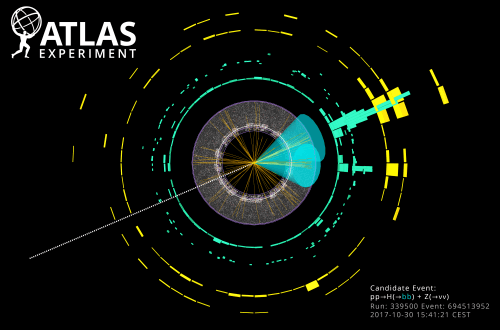The Technion researchers involved in the Atlas detector in the LHC particle accelerator: "This is the detection of the Higgs with enormous certainty"

The LHC particle accelerator reported last week a new observation that verifies the existence of the Higgs boson. This is about a decade after the opening of the accelerator on September 10, 2008. LHC is the largest accelerator in the world, and it operates in an underground tunnel on the Switzerland-France border as part of CERN - the European Organization for Nuclear Research.
The existence of the Higgs particle was predicted as early as 1964 and was verified experimentally for the first time at the LHC on July 4, 2012. The historical verification earned the physicists Peter Higgs (Great Britain) and Francois Engler (Belgium), who predicted the existence of the particle, the Nobel Prize in Physics for 2013.
The Higgs particle has a very high mass and therefore requires enormous energy to proactively create it. At the LHC, where tens of millions of interactions occur every second, these particles are produced using two high-energy proton beams colliding with each other.
To demonstrate the existence of particles such as the Higgs, it is not enough to be able to produce them; Strong and sophisticated detectors and an advanced ability to analyze the data obtained with them are needed. Indeed, the LHC operates two detectors, and more precisely - two huge detection facilities, Atlas and CMS. The reported event was observed in both, so this is a very significant verification.
About 3,000 scientists are active in Atlas alone. The Israeli team includes representatives from the Technion, the Weizmann Institute of Science and Tel Aviv University and lead several areas including the control system, the "trigger" system (which selects and records the events relevant to the research) and the "Grid" system which analyzes the data using distributed computing. The Technion's activities at Atlas are led by three researchers from the Faculty of Physics: Professors Shlomit Terem and Yoram Rosen and Associate Professor Enrique Kahomowitz.
For years, the Higgs particle was considered the missing link in the standard model, which is the central theory in modern physics. A missing link - because the Higgs gives many particles their mass, a mass without which the laws of nature would not function as they are known to us. The Higgs particle cannot be directly observed, and this is because it decays at an enormous speed (10-20 seconds). However, its existence can be inferred from other particles that form when it decays (decays).
The 2012 verification was based on the detection of photons - light particles created as a result of the decay of Higgs particles. Despite the enormous importance of that observation, LHC scientists aimed to demonstrate the existence of Higgs particles through a much more common event: the formation of heavy quark pairs. According to Prof. Rosen, "Most of the Higgs particle decay events, about 60% of them, lead to the creation of these quark pairs, called b quarks. The problem is that this decay is difficult to detect, and even when we detected them we had to make sure that they were not caused by another event, what is known as 'background'."
The achievement recorded now rests on the accumulation of a huge amount of data, on continuous improvement in the analysis of the data and on cross-referencing information between Atlas and CMS. The result: identifying the event as Higgs decay with almost absolute certainty - more than 5 standard deviations. "In other words, the certainty that what we saw here is a trace of the Higgs boson is much higher than 99.99%."
Atlas spokesman Carl Jacobs said that "the observation is an important milestone in the study of the Higgs boson. It shows that Atlas and CMS led to an achievement that exceeds all expectations and a deep understanding of the information received from the accelerator while controlling the background noise."
The director of research and computing at CERN Eckhard Elsen said that "our experiments continue to focus on the Higgs particle, which is considered by many to be the gateway to the new physics." The LHC estimates that in the future the Higgs particle will be verified using muons, which are particles with a lower mass.
LHC is a huge particle accelerator 27 kilometers in diameter. In every second of activity, tens of millions of collisions occur in it between particles moving at the speed of light, in an environment 100 times hotter than the temperature prevailing in the center of the Sun. At the end of this year, the accelerator will stop its activity for a limited period in order to introduce technological adjustments that will improve its performance.
More of the topic in Hayadan:
- New evidence strengthens the discovery of the Higgs - the particle responsible for mass
- CERN tour notes, part 21: Prof. Elam Gross: The discovery of the Higgs is the beginning of the new science of the XNUMXst century
- Prof. Higgs in response to the question of the science website: I believe that when the accelerator returns to activity there will be interesting discoveries
